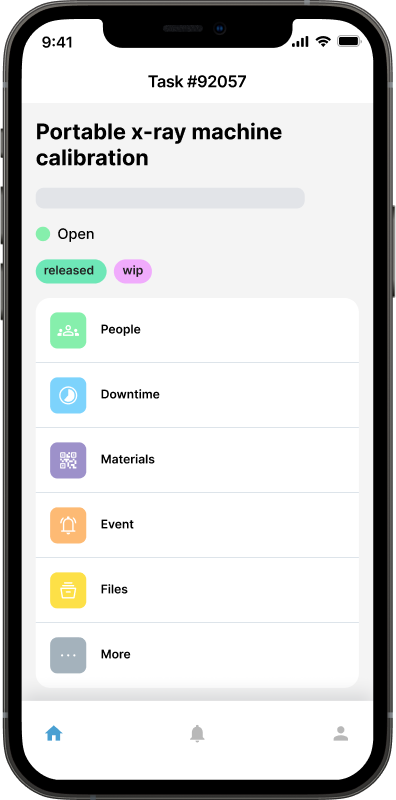Work Order Software for Small Businesses: Affordable Solutions for Big Benefits

Every dollar saved and every process optimized can make a significant difference. Work Order Management Software and Preventative Maintenance Software are two powerful tools that have traditionally been associated with larger enterprises. However, small businesses can also harness the benefits of these technologies.
In this blog, we'll explore how Work Order Software can provide cost-effective and efficient solutions for small businesses, offering a gateway to streamlined operations, reduced downtime, and improved asset management. Join us on this journey to discover how small businesses can make the most of preventative maintenance software and Work Order Management Software without breaking the bank.
Affordable Solutions for Small Businesses
Small businesses often operate on tight budgets, making it essential to find cost-effective solutions that don't compromise on quality. Work Order Software is a perfect fit for this scenario. It offers affordable options that are tailored to the needs and resources of small businesses. Here's how you can benefit:
1. Streamlined Maintenance Operations
In small businesses, where resources are often limited, efficiency is paramount. Work Order Software streamlines maintenance operations, ensuring that tasks are assigned and executed with maximum efficiency. The software provides a centralized platform where you can create, assign, and track work orders. This not only minimizes downtime but also enhances overall productivity. For small businesses, this streamlined approach can significantly reduce operational costs.
2. Preventative Maintenance Made Easy

Preventative maintenance is a cornerstone of any successful small business's strategy. Preventative Maintenance Software integrated into Work Order Software simplifies the process, making it accessible and manageable for small businesses. By utilizing this feature, you can schedule routine maintenance tasks and inspections. This proactive approach helps in preventing unexpected breakdowns and reduces overall maintenance costs, making it an excellent cost-saving solution for small businesses.
3. Improved Asset Management
For small businesses, efficient asset management is crucial. Work Order Software offers asset tracking features that allow you to monitor the condition and performance of your assets. This feature is particularly useful for small businesses with limited resources, as it ensures that assets are well-maintained and have extended lifespans. As assets are a significant investment for small businesses, prolonging their useful life can result in substantial cost savings.
4. Easy-to-Use and Implement
Small businesses may not have the luxury of dedicating extensive time and resources to software implementation and training. Work Order Software is designed with user-friendliness in mind. Its intuitive interface and easy implementation process ensure that the transition is smooth and swift. With minimal training requirements, your team can quickly adapt to the new system, avoiding disruptions and the need for costly training programs.
5. Cost Savings
Small businesses often operate on tight budgets, and unexpected maintenance expenses can be a financial burden. Work Order Software, with its preventative maintenance scheduling capabilities, can help small businesses avoid costly repairs and asset replacements. By proactively addressing maintenance needs, small businesses can control maintenance costs and allocate their budgets more efficiently. The cost savings achieved through preventive maintenance can be significant over time, allowing small businesses to invest in other areas of growth and development.
Maximizing the Benefits
To make the most of Work Order Software for small businesses, follow these best practices:
1. Assess Your Needs
Begin by conducting a thorough assessment of your organization's maintenance needs. Understand the types of assets you need to manage, the scale of your operations, and the specific challenges you face. This initial assessment serves as the foundation for selecting the right Work Order Software.
2. Choose the Right Software
With your needs in mind, research and select Work Order Software that aligns with your budget and requirements. Look for a solution that offers features such as preventive maintenance scheduling, asset tracking, and inventory management. Consider both the short-term affordability and long-term benefits when making your decision.
3. Set Clear Objectives
Before implementing Work Order Software, it's essential to set clear objectives for its use. Define what you aim to achieve with the software, whether it's reducing downtime, extending asset lifespan, or cutting maintenance costs. These objectives will guide the implementation process and help you measure the software's effectiveness.
4. Provide Adequate Training
While Work Order Software is designed for ease of use, it's essential to ensure that your team receives proper training. User proficiency is key to a successful implementation. Training programs need not be extensive or expensive, but they are crucial to help your team make the most of the software's features.
5. Regularly Update and Improve
Work Order Software is not a one-time solution but an ongoing tool for improving maintenance operations. Keep your software up-to-date and adapt it to changing needs. Staying informed about industry trends and best practices will ensure your small business remains competitive and efficient in the long run.
Work Order Software is not limited to large enterprises. Small businesses can also reap the benefits of streamlined maintenance operations, preventative maintenance, improved asset management, and cost savings. By choosing affordable solutions that suit your needs, you can ensure that your small business operates efficiently and remains competitive. Embrace Work Order Software as a valuable tool to enhance your operations and set the foundation for long-term success. With the right approach, you can achieve significant benefits without breaking the bank. Small businesses have the opportunity to enjoy the advantages of advanced maintenance management tools, enabling them to thrive and grow even in highly competitive markets.

